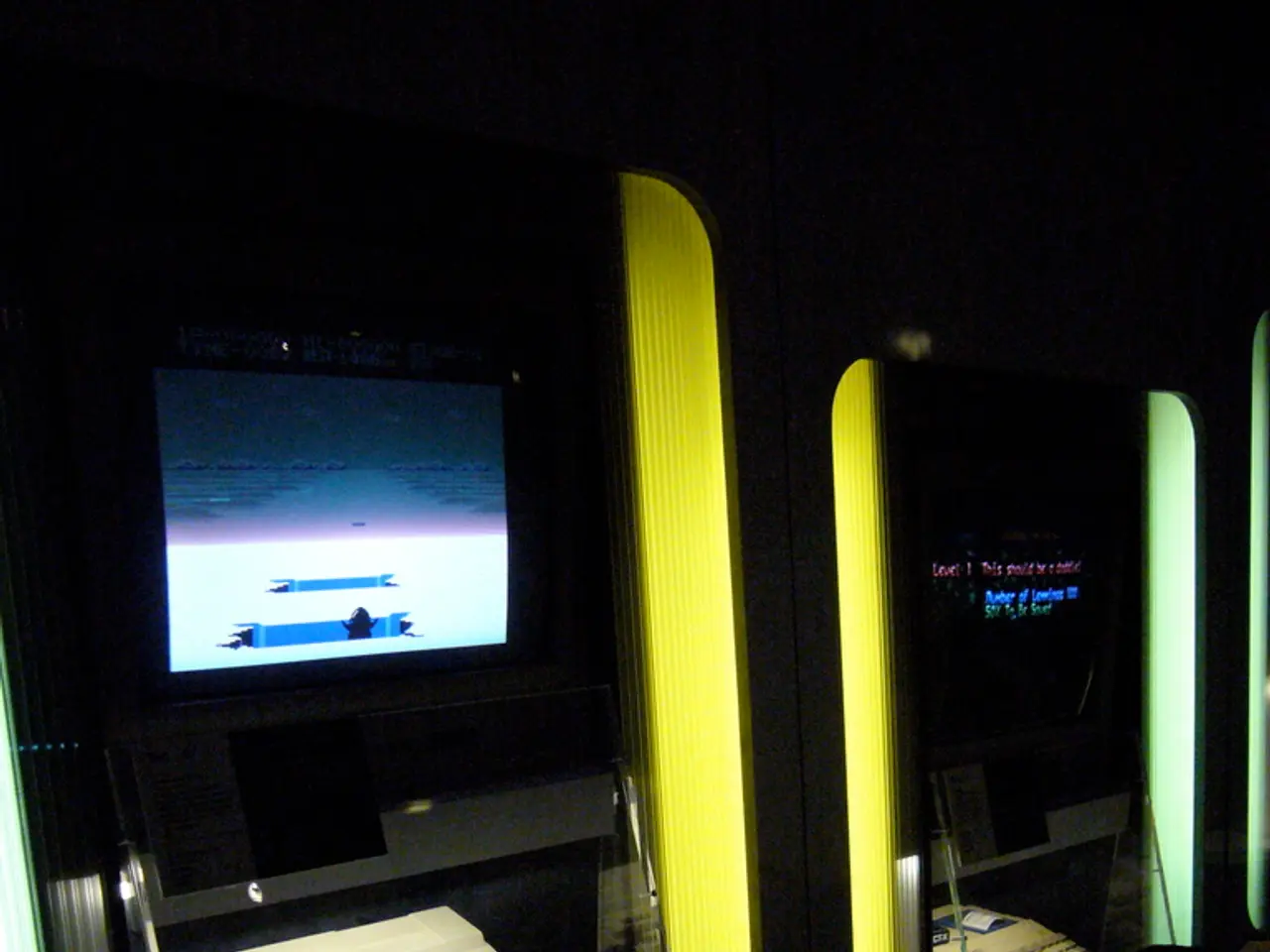Comparing HDMI and DVI Cables: A Straightforward Comparison Guide
In the realm of video connectivity, two names often come up: HDMI and DVI. While both serve the purpose of transmitting video signals, they have distinct differences that make one more suitable for modern creative workflows.
HDMI, or High-Definition Multimedia Interface, is a more modern standard, offering much higher resolutions and refresh rates than DVI. It can support up to 4K at 144 Hz natively, or 8K at 60 Hz natively, or even 120Hz with Display Stream Compression [1]. HDMI is also capable of transferring audio signals, a feature that DVI lacks [2].
On the other hand, DVI, or Digital Visual Interface, only supports 8-bit RGB colours, whereas HDMI offers 12-bit performance, allowing for more colours to be rendered natively [1]. DVI's maximum data rate is 9.9 Gbit/sec, and it can support a resolution of 3840x2400 at 30 Hz, or 2560x1600 at 60 Hz [3].
In practical terms, modern professional systems—such as those used for video editing and graphic design with high-end GPUs—typically favor HDMI or DisplayPort connections due to their higher bandwidth, support for high dynamic range (HDR), and better compatibility with modern displays [2][3]. DVI remains usable for single-link digital video at certain resolutions, but it is mostly considered legacy and limited [1].
For maximizing productivity and visual fidelity in modern content creation settings, HDMI (especially HDMI 2.0/2.1) or DisplayPort is preferred over DVI due to support for higher resolutions, color depths, refresh rates, and audio transmission in a single cable [3]. DVI's use is mostly limited to compatibility with older hardware or certain monitor scenarios where only video is needed without advanced features.
In terms of physical appearance, HDMI is a smaller plug compared to DVI, with a slim rectangle shape and 19 pins. DVI, however, is a larger plug with a rectangular shape and 24 pins three rows deep, and a square consisting of four more pins [1]. Both HDMI and DVI have smaller versions (Mini and Micro) that are found on older Apple computers and some tablets and phones [1].
Adaptors are available to connect HDMI and DVI devices together, and they are affordable. If you have a DVI device and need to connect it to another device, using an HDMI to DVI cable or adapter is a cost-effective solution [2]. Similarly, adaptors are available to convert DVI to HDMI and vice-versa, allowing outdated monitors to be used in modern setups [2].
In summary, for modern creative workflows, HDMI is more relevant due to its higher bandwidth, combined audio/video support, and advanced features like HDR and HDCP [1][3]. DVI remains compatible and usable but is increasingly outdated, offering only video without audio and limited resolution/refresh rates [1]. Professionals using multi-monitor or high-resolution displays benefit more from HDMI or DisplayPort connections commonly found on current GPUs and displays [2][3]. Both HDMI and DVI cables are inexpensive, with HDMI cables available for around $5/£5 and DVI cables for around $7/£7.
- In the world of creative work, HDMI and DVI have different roles, with HDMI being more suited for modern workflows in video editing, graphic design, and other artistic fields that require high resolutions, color depth, and refresh rates.
- HDMI, or High-Definition Multimedia Interface, offers advantages such as native 4K at 144Hz or 8K at 60Hz, 12-bit color performance, combined audio/video support, and higher bandwidth – traits that make it ideal for creative design, UI, UX, and 3D jobs.
- Modern smart-home devices, gadgets, and technology also often come with HDMI ports for seamless connectivity, demonstrating the versatility of this high-performance standard in various domains.
- DVI, however, even though it has its own significance in video transmission, is considered less relevant in modern creative work since it only supports 8-bit RGB colors, limited resolutions of up to 3840x2400 at 30Hz or 2560x1600 at 60Hz, and lacks audio support.
- Artists and designers who work with color-critical designs, such as in graphic art or smart-home device interface development, can benefit from HDMI's superior color depth and performance that results in more accurate and vibrant colors on their displays.
- For those stuck with DVI devices or monitors, adaptors are an affordable solution to connect them to modern HDMI systems, extending the life of their equipment and ensuring compatibility in contemporary creative work environments.








